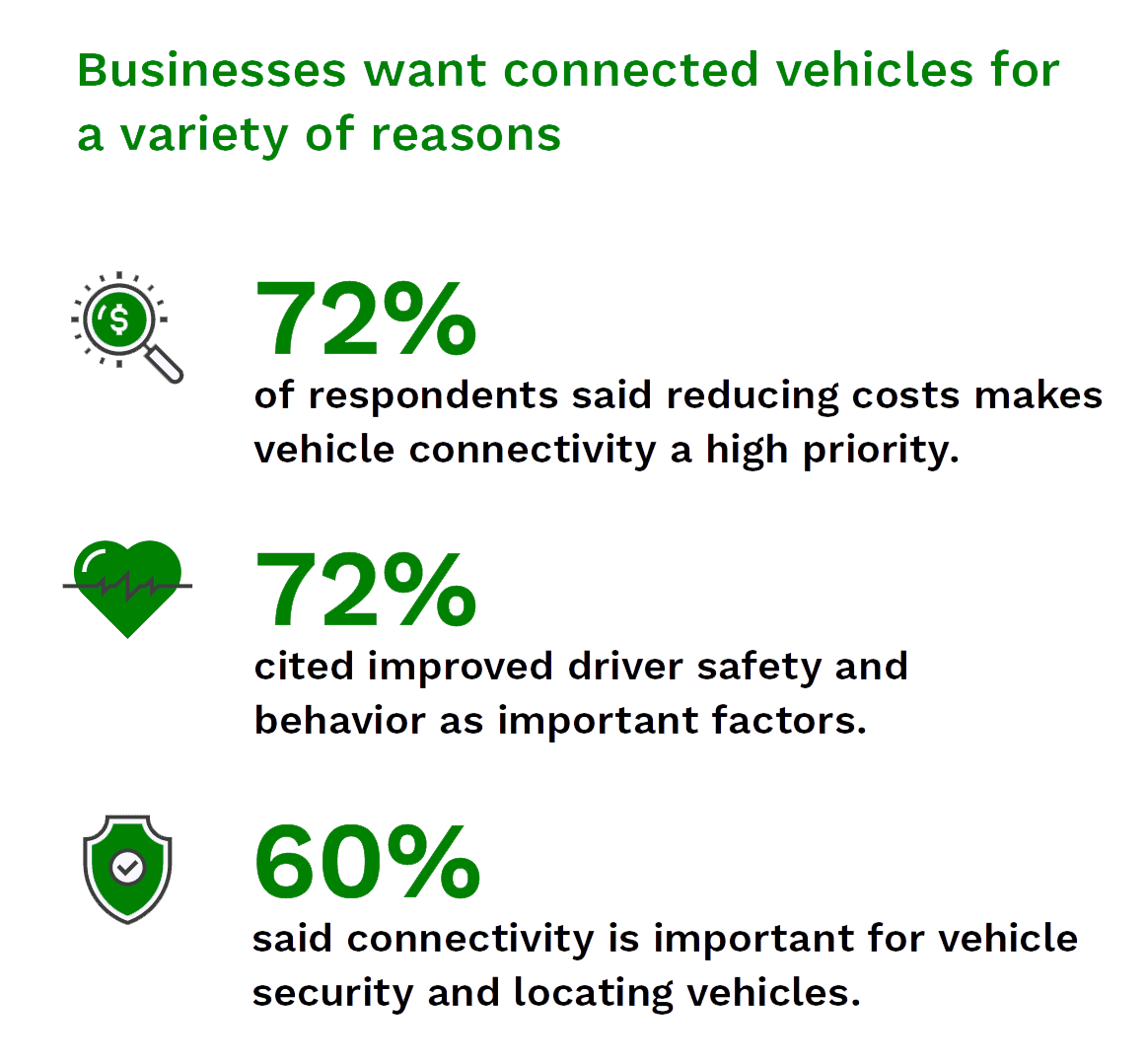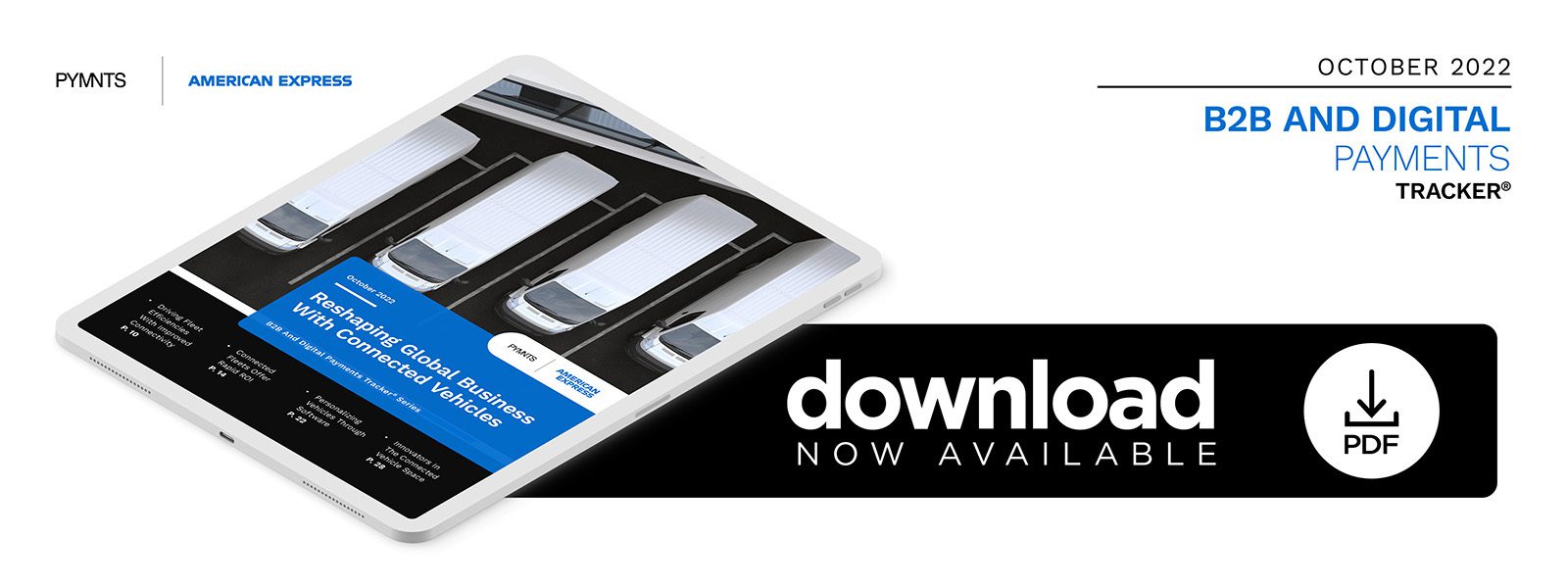PYMNTS Intelligence: Connected Fleets Are Becoming the New Normal

The history of connected vehicles began with GM’s introduction of OnStar® in 1996, and in 2021, the number of connected vehicles in the United States was estimated to be 74 million. Connectivity does much more now than it did nearly three decades ago, with modern technology able to assist with everything from predictive maintenance to driver coaching and even to detect when drivers need to take a break.
The B2B Opportunity in Providing Fleet Connectivity Solutions
Seventy-two percent of surveyed fleet operators said that fleet connectivity is either important or very important. Companies have long recognized the benefits of telematics data for analyzing fleet usage and developing more efficient processes. As connected vehicle technology has evolved, particularly with artificial intelligence (AI)-powered capabilities, improved driver safety sat among the top reasons cited for making connectivity a priority.

There is still a lot of room in this space for innovators to capture new customers, however. While 16% of respondents reported that at least half of their fleets are connected, approximately one-third of corporate fleets have connectivity for 5% or less of their entire fleets. This is expected to change dramatically by 2025, when it is estimated that 48% of all fleets will be connected, with the pandemic speeding up the transition to connected fleets.
Connected vehicles offer several advantages for fleet operations. A central dashboard can assist with visualizing fleet operations and tracking driver performance. Vehicle data can be collected to assess fuel usage, provide insights into how vehicles are operating and assist with preventive maintenance. At the same time, many fleet operators see room for improvement in the areas of predictive modeling and application programming interface (API) integration.
Fleet Operators Already See Gains From Connected Vehicles
A survey of European fleet operators showed clear return on investment (ROI) for most of those that had invested in connected vehicle technology. Eighty-six percent of respondents reported ROI within a year or less, with 44% seeing a return in less than six months. Fifty-two percent also said they were able to reduce fuel costs, while 43% saw a reduction in accidents. Since the pandemic began, 47% of respondents reported investing in new systems for tracking vehicle data. Among those who invested in integrated video technology, 57% reported reduced costs associated with accidents, and 47% were able to obtain reductions in their vehicle insurance costs.
Interest in expanding fleets is still on the rise, and along with it are opportunities for connected vehicle solutions as operators seek to update fleets. August 2022 saw year-over-year growth in fleet sales, with a 37% increase in commercial fleet sales and a 28% increase in government fleet sales. Among fleet executives surveyed, 44% said new purchases are motivated by the improving fuel economy, and 64% cited costs associated with maintenance and repairs.

